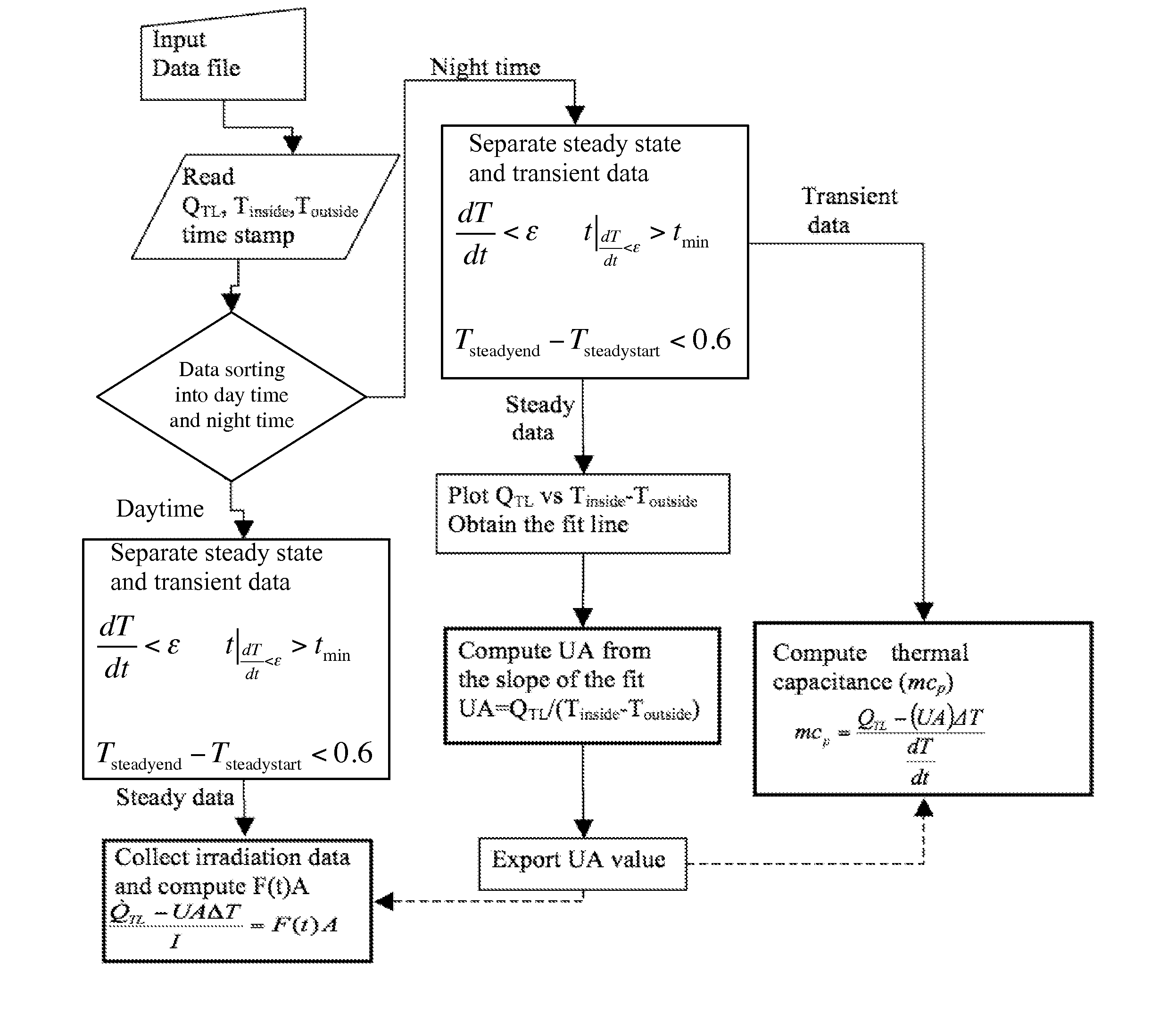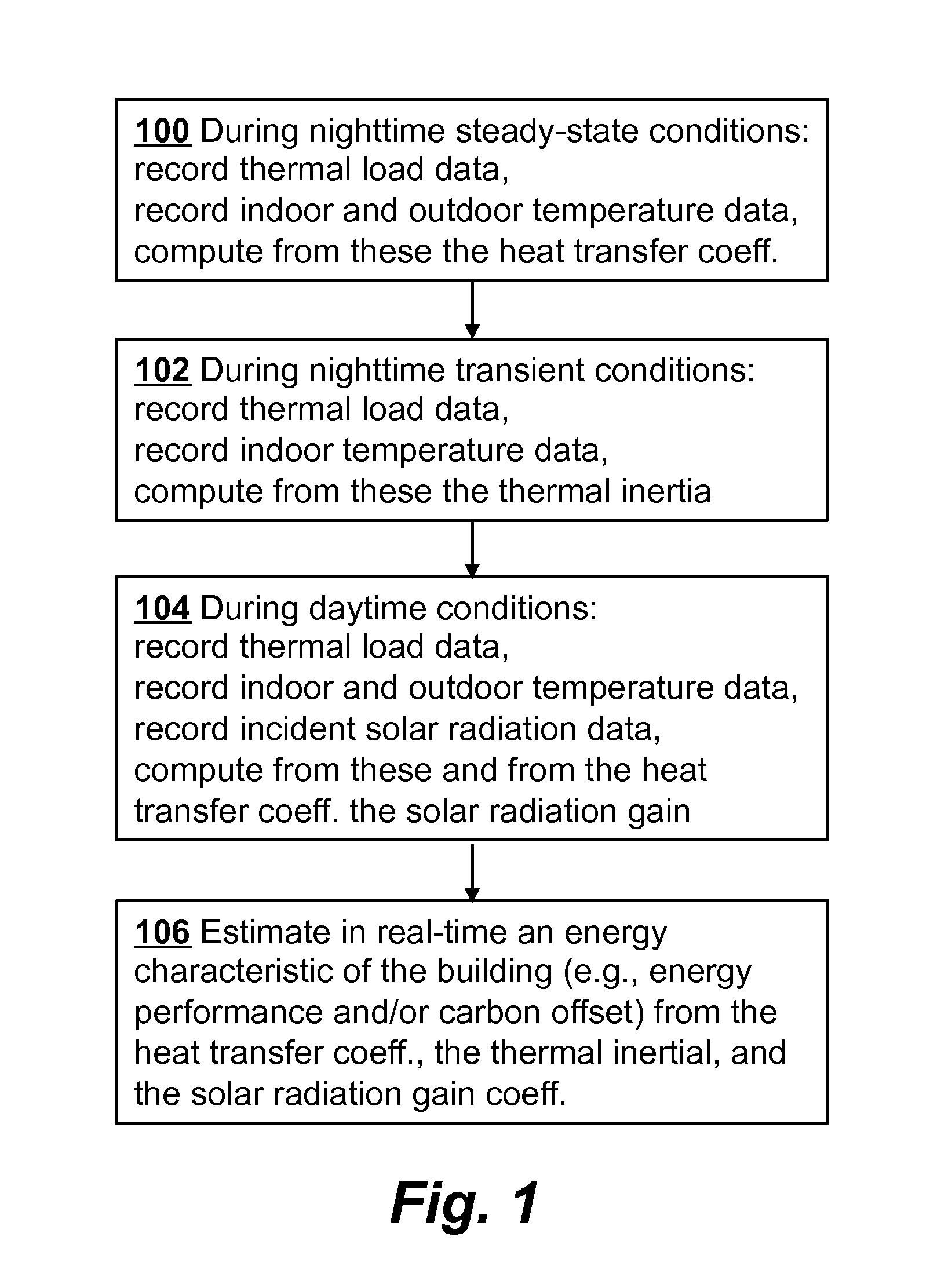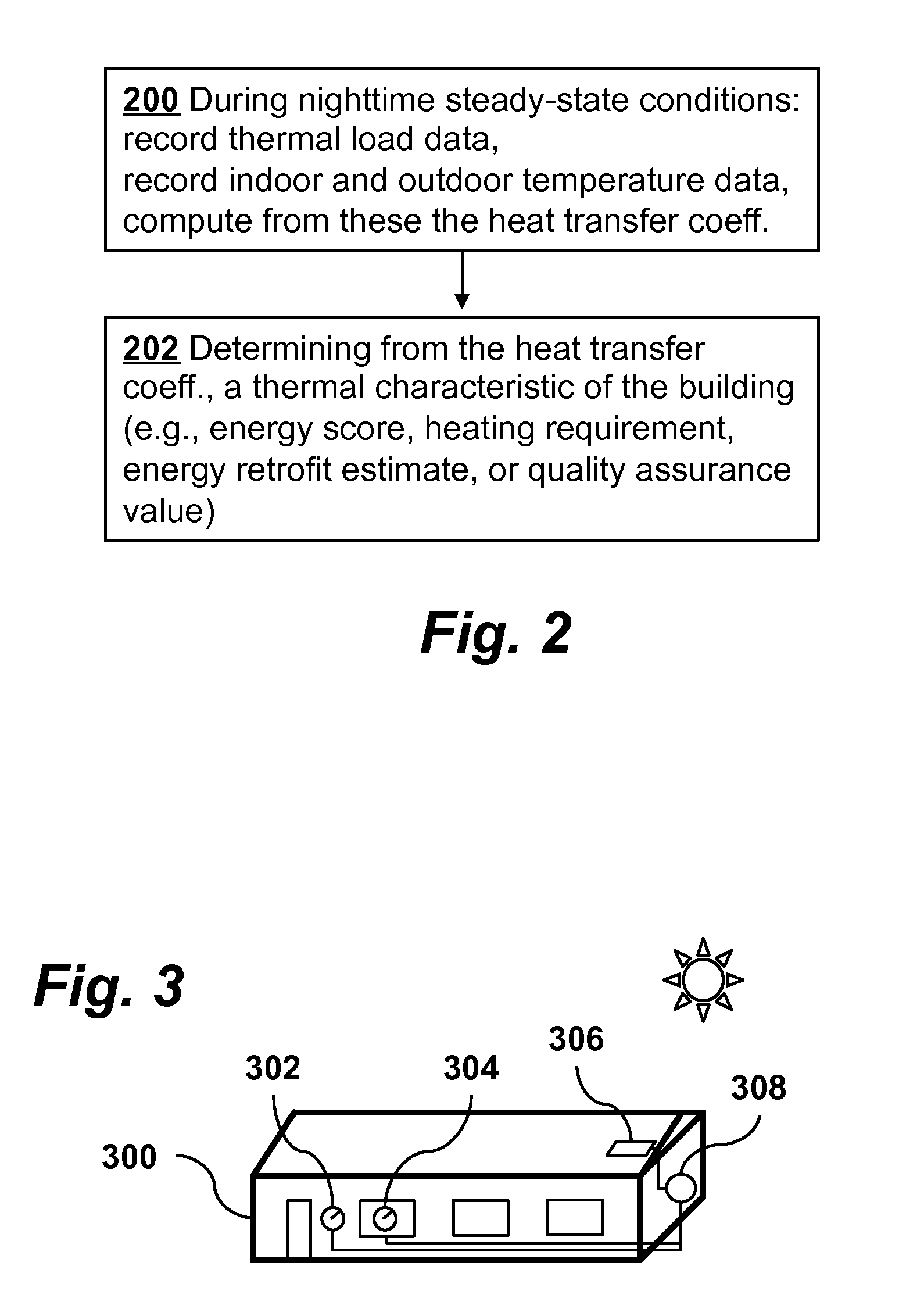Estimating energy savings and carbon offsets for buildings in real-time
a real-time, energy-saving technology, applied in the direction of instruments, heat measurement, calorimeters, etc., can solve the problems of affecting the the difficulty of accurately estimating the energy consumption of buildings, and the difficulty of properly sized hvac systems, etc., to achieve the effect of monitoring the real-time energy performance of buildings, cost-effective, and easy implementation
- Summary
- Abstract
- Description
- Claims
- Application Information
AI Technical Summary
Benefits of technology
Problems solved by technology
Method used
Image
Examples
Embodiment Construction
[0029]In the description that follows, the following nomenclature will be used.
[0030]A Building inside / outside heat transfer surface area (m2)
[0031]Ac Conduit cross sectional area (m2)
[0032]E Efficiency
[0033]EA Energy rate consumption of appliances (W)
[0034]Ėtother Energy rate from other unaccounted energy sources (W)
[0035]F(t) Overall solar radiation gain coefficient (radiation response) of the building
[0036]I instantaneous incident radiation on the building (W / m2)
[0037]{dot over (Q)} Energy rate (W)
[0038]{dot over (Q)}TL building thermal load
[0039]T Temperature (° C.)
[0040]ΔT temperature difference between the building indoors and outdoors
[0041]U Overall heat transfer coefficient (W / m2K)
[0042]V Velocity (m / s)
[0043]cp Building air specific heat at constant pressure (J / kgK)
[0044]t Time (s)
Tt
rate of change of the building air temperature (T) change with time (t)
[0045]m building air mass
[0046]{dot over (m)} Mass flow rate (kg / s)
[0047]mcp thermal capacitance (or thermal mass / inertia) o...
PUM
 Login to View More
Login to View More Abstract
Description
Claims
Application Information
 Login to View More
Login to View More - R&D
- Intellectual Property
- Life Sciences
- Materials
- Tech Scout
- Unparalleled Data Quality
- Higher Quality Content
- 60% Fewer Hallucinations
Browse by: Latest US Patents, China's latest patents, Technical Efficacy Thesaurus, Application Domain, Technology Topic, Popular Technical Reports.
© 2025 PatSnap. All rights reserved.Legal|Privacy policy|Modern Slavery Act Transparency Statement|Sitemap|About US| Contact US: help@patsnap.com



